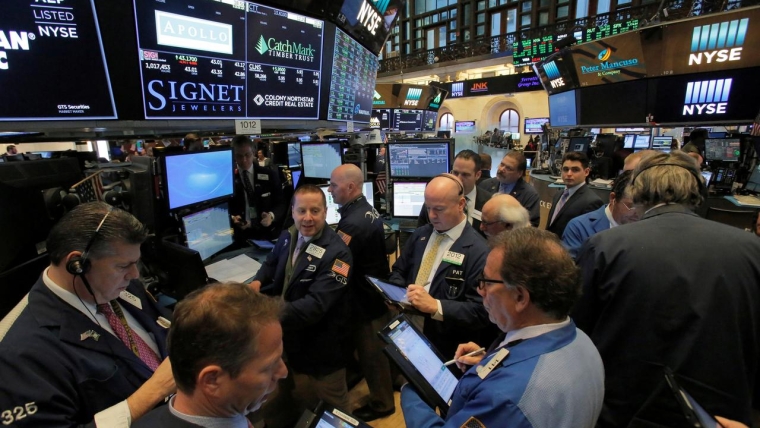
The week opened with the focus on the oil market after the attacks on Saudi oil production facilities on Saturday. Brent crude is currently up 14½% for the day, climbing higher overnight as new information comes to light. Market movements have been predictable, with CAD, NOK and safe havens outperforming, while the NZD has pushed lower. Global equities are modestly weaker, while global rates have pushed lower.
Brent crude oil shot up 20% soon after the oil futures market opened Monday morning, before settling up “only” 10% in local afternoon trading. But over recent hours, prices have climbed higher again to be up almost 15% to USD69 per barrel, as further information has emerged overnight.
Yesterday, President Trump threatened a military response (“locked and loaded”) depending on verification of the culprit of the attacks on Saudi Arabia’s oil supply. Since then, Saudi Arabia said that Iranian weapons were used in the attack and that the attack was not launched from Yemen, contradicting the claims that Houthi rebels were responsible for the attack. The WSJ reports “American officials say intelligence indicates that Iran was the staging ground for a debilitating attack on Saudi Arabia’s oil industry, and have shared the information with Saudi Arabia as both countries weigh retaliatory strikes”.
Furthermore, reports suggest less optimism that Saudi Arabia can rapidly recover lost oil production and it will likely take weeks or months before the majority of output is restored. The combination of a longer than expected return to full Saudi oil production and the lingering threat of an escalation of Middle Eastern tensions, with possible US retaliatory action, is likely to see a sustained period of higher oil prices.
The market reaction has been fairly predictable. The S&P500 is currently down 0.3%, even with a 3½% gain for Energy stocks, while defensive sectors have also outperformed. US Treasury yields are down 4-6bps across the curve, with a slight flattening bias, seeing the 10-year rate down 6bps to 1.84%. All of the move reflects a fall in “real” rates, with implied 10-year break-even inflation flat at 1.68%. Germany’s 10 year rate is down 3bps.
In currency markets, CAD and NOK have led the way. USD/CAD is down 0.3% to 1.3240, the limited move reflecting the safe-haven characteristics of the USD, with USD indices up in the order of 0.3-0.4%. JPY and CHF, the other preeminent safe havens, have managed to largely hold their ground against the USD. The NZD has underperformed, pushing down 0.5% to below 0.6350 this morning, the only puzzle being why it largely traded sideways through the Asian trading session. The AUD has fallen by less, just 0.2% to 0.6865, seeing NZD/AUD probing fresh lows below 0.9250. The relative terms of trade story on a sustained lift in oil prices justifies a weaker NZD in general, including the NZD/AUD cross.
There have been no key economic releases overnight while yesterday the key August monthly economic activity indicators for China were all below market expectations, providing further evidence of the trade war driving weaker growth and the economy showing a lack of response so far to a range of policy easing measures.
GBP has reversed some of it recent outperformance, down 0.6% to 1.2420. Boris Johnson met EC President Juncker for the first time, with reports of a “constructive” meeting, although nothing substantial seemed to be achieved. Juncker’s team said that the UK has still not presented any proposals of a legally operational solution to allow the free flow of goods between Ireland and Northern Ireland. EUR is also on the soft side, down 0.6% to 1.1000.
In other currency news, the BIS released its triennial foreign exchange survey. Trading in FX markets reached $6.6 trillion per day in April 2019, up from $5.1 trillion three years earlier. Growth of FX derivatives trading, especially in FX swaps, outpaced that of spot trading. The US dollar retained its dominant currency status, being on one side of 88% of all trades. The NZD retained its ranking as the tenth most traded currency with a 2.1% share of average daily turnover, and an average USD107b of NZD/USD traded per day on a net-net basis (adjusted for local and cross-border inter-dealer double-counting). FX trading in the NZ market accounted for just a 0.1% share of global turnover, with the UK (43.1%) and the US (16.5%) remaining the dominant trading centres.
NZ rates were little moved yesterday. NZ’s 10-year government rate rose by 1bp to 1.33%, with the “pull” from higher US rates during the Friday night session more than offsetting the downward pressure in rates from the post-oil shock trading in US Treasury futures. That the BNZ performance of services index held up well in August was some relief following the recent move to contractionary readings for the manufacturing PMI.
In the day ahead only second-tier economic data are released. The market will remain focused on the oil market and the US response to the attack and otherwise remain fairly quiet in the lead-up to the Fed’s latest policy announcement Thursday morning NZ time.

We welcome your comments below. If you are not already registered, please register to comment.
Remember we welcome robust, respectful and insightful debate. We don't welcome abusive or defamatory comments and will de-register those repeatedly making such comments. Our current comment policy is here.